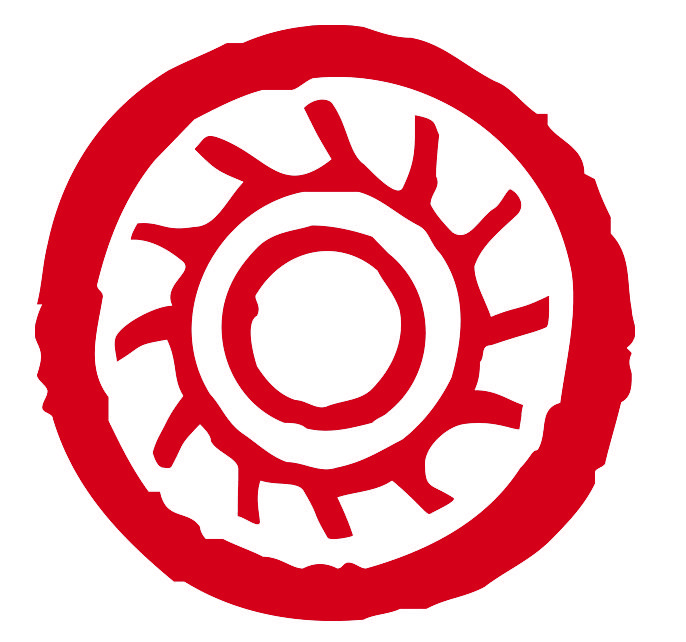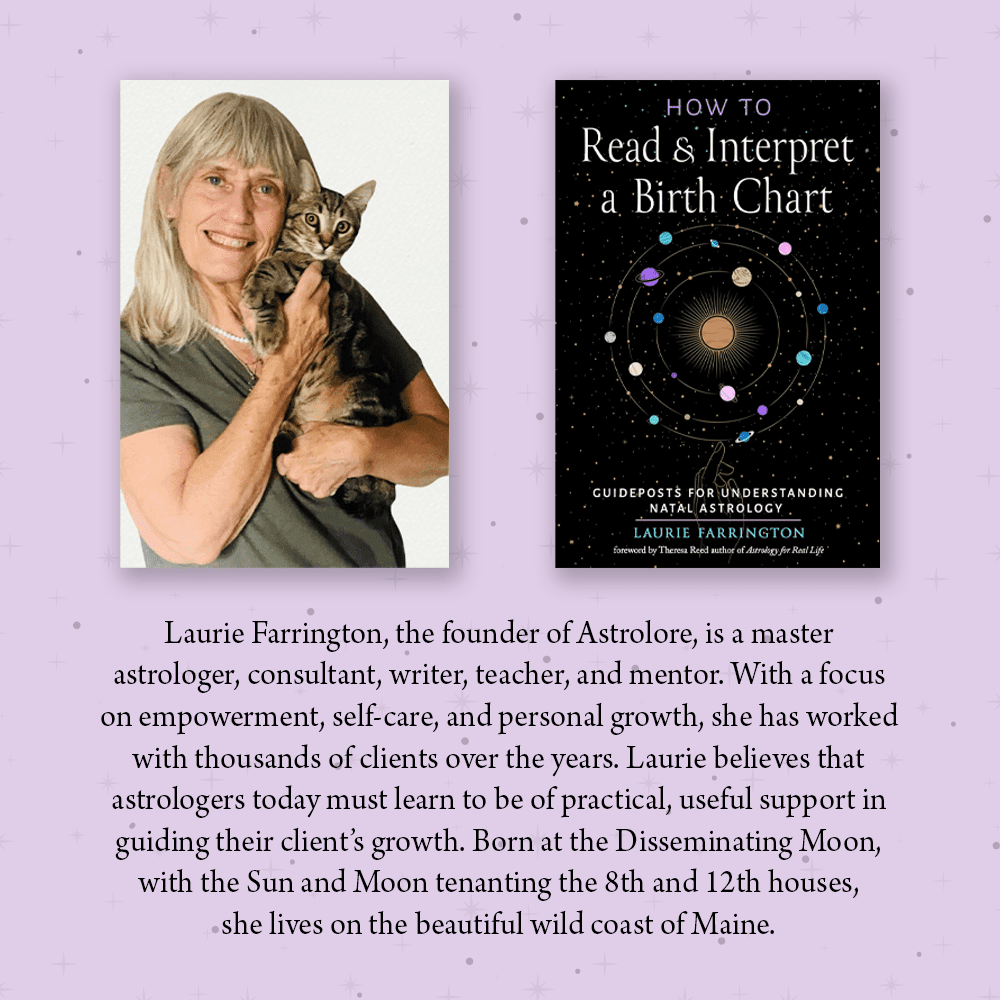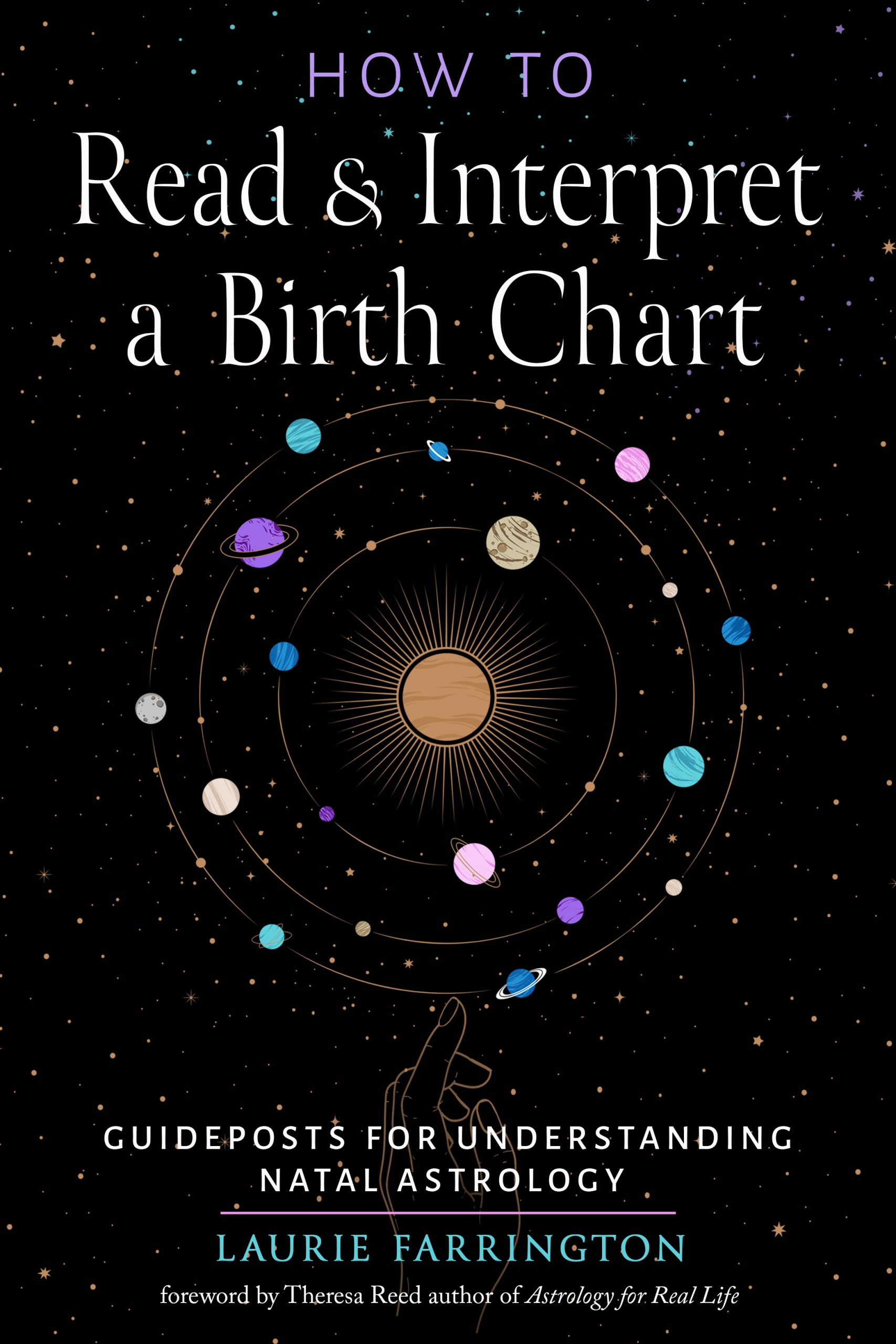An Excerpt from “How to Read and Interpret a Birth Chart” by Laurie Farrington
Within the four branches of Western astrology, individual practitioners develop their own personal approaches. I have hesitated over the years to put a label on the type of astrology I practice. Yet, I am aware that all that I have read and studied over the years has come together into an amalgamation of thoughts, ideas, and techniques that comprise my own unique personal approach. Over time, I have come to identify that approach most closely with psychological and humanistic astrology.
The term “humanistic astrology” was first introduced by Dane Rudhyar in the 1930s and later developed in Michael Meyer’s “Handbook for the Humanistic Astrologer.” Rudhyar was powerfully influenced by Marc Edmund Jones, who brought an understanding of psychology to the more predictive traditional astrological thought. Rudhyar’s work marked a major shift in the Western astrological perspective of the time. Rather than seeing various factors in the birth chart as “good” or “evil,” he saw the potential within the chart for learning, self-development, and growth. He understood, and showed us, the connection between the immense complexity within each human being and the equally immense complexity within the patterns of the cosmos. He saw the potential for Western astrology to be, in itself, a symbolic language based on the experiences that are common to living life as a human on planet Earth.
Humanistic astrology is not a separate branch of Western astrology, but rather an approach within the Western tradition that emphasizes a person’s potential for self-realization, self-understanding, and psychological development. It focuses on astrology as a tool for personal growth and self-actualization, rather than as a method of predicting events and determining fate.
Humanistic astrologers believe that the chart reveals the full potential of the life of the native (owner) of the chart. I view humanistic astrology as a spiritual discipline that emphasizes an individual’s potential for growth and development, and even offers a path of alchemy by facilitating trans-formative change. Using astrology in this manner provides a path to the soul’s evolution. It links us with the cosmos, highlighting and illuminating the connections between us. Looking into the mirror of the cosmos, we see ourselves, our beauty, our warts, our struggles, and our potential.
Thinking Humanistically
Consider your own natal chart, printed out on a two-dimensional sheet of paper. As you read this book, I recommend having it (along with the natal charts of your loved ones) in front of you. Slow your mind and your breathing as you deeply consider the moment in time that your chart represents. How does the image, with its complex network of symbols, represent the immense complexity of your inner nature and your outer life?
Imagine the scene of your birth as it played out in a hospital or perhaps a quiet room in the home dedicated to the event at hand. Your mother has just given birth. Ideally, another loving parent is standing by her side in profound awe at the wonder of the event. Perhaps your grandparents, aunts, uncles, or family friends are nearby or at home waiting by the phone for the call announcing your arrival. Perhaps you have siblings who hear the news when they wake in the morning, knowing instinctively that their lives will never be the same. Neighbors and friends text and call each other with the news: “The child has arrived; mama is doing well; the baby is healthy.”
As you take your first breath, air enters your lungs and your first cry announces your arrival. Imagine a tiny sliver of time—one instant removed from the entire river of time—given to you, the newborn. That moment is yours to decipher, to grapple with, and to understand. You will receive the gifts of that moment, as well as the wounds that need to be healed. The occasion of your first breath is indelibly imprinted upon your heart, your mind, and your soul. In that moment, you are given full responsibility to love, honor, and respect the unfolding of this one precious human life.
Your mother, father, siblings, extended family, neighbors, and friends all hold a place in your chart, represented by the Sun, the Moon, and the inner or personal planets—Mercury, Venus, and Mars. This first level of influence derives from the intimate world of those who immediately surround you.
Beyond this tight circle of family and friends, your growth is supported or thwarted in the coming years by the community, the religious or spiritual organizations, and the municipality into which you are born. This second level of influence is represented by the social planets, Jupiter and Saturn.
The outer planets represent the forces beyond your perception that will ultimately impact you in ways that are far-reaching and profound. These planets—Uranus, Neptune, and Pluto—move very slowly and represent generational cycles, the rise and fall of governments and cultures. They reflect the differences between generations that are inherent in large planetary and cultural shifts. Because they are so far removed from Earth, these planets are invisible to the naked eye.
Discovering the Natal Chart
For most of us, the zodiacal signs are the initial hook that draws us into the study of natal astrology. It is easy to see why. If your new friend’s birthday is in early January, you know that person is a Capricorn. If someone’s birthday is in mid-April, you know that person is an Aries. This in itself gives you tantalizing information. Your curiosity about the people who populate your life is instrumental in drawing you inexorably toward astrology.
If this interest persists and you don’t get stuck within the intrigue of cycles, eclipses, and all things mundane, the next thing you reach out to understand is the horoscope—the birth chart itself. The first time you see a birth chart, you discover that you have stepped into something mysterious and unknown. A secret language calls you forward, leading you to understand your horoscope as a map of the heavens at the moment of your first breath. As your focus turns to the planets, you see that each one speaks through the sign it is in, providing deeper understanding. It is a fun and exciting process to put these two pieces of the puzzle together, and you can engage in all kinds of interesting considerations. What would it be like to have Mars in Cancer or Mercury in Scorpio? In which sign was your mother’s Moon, and how was that reflected in her abilities or challenges in mothering?
It is fascinating to reflect on what you see in the personalities of those around you. Your sister, born in the Sun-ruled sign of Leo, is loud and brash and always finds herself in the spotlight. No wonder you, without a single planet in water signs, never understood your mother, who was born in deep winter, with the Sun and Mercury in the sign of Pisces and her Moon in Cancer. She was sweet and kind, as well as a bit spacey. She doesn’t quite seem to belong on this rough and tumble planet. What would that combination feel like? It is hard to imagine, and yet the consideration helps you to understand your mother in a way that you have never been able to in the past. Through this process, you realize the power of astrological understanding to help us develop compassion and understanding toward others. This is one of the great superpowers we receive through the understanding of natal astrology.
As you continue observing your circle of family and friends, it all seems to make sense—until you run into someone new. When you meet new people, before you know the date of their birth, you may watch them and try to think it through. It’s not really that you are trying to guess, so much as that you are testing your skills of perception and understanding. This new friend is loud, direct, self-confident, and dynamic. Imagine your surprise to discover that person was born in early March when the Sun was in Pisces! What went wrong?
Nothing went wrong. It’s just that you lack the full picture. Underneath an exterior that does not show the core Pisces self is the sensitive mystical nature of the two fishes. Knowledge of the full chart will fill in the picture and provide the necessary information and understanding.
Reading a Natal Chart
Every natal chart you encounter merits careful and meticulous consideration. It’s essential to recognize that each one serves as both a reflection of an individual and a moment frozen in celestial time. Imagine it as a snapshot of the universe’s grand dance, in which the moving planets come to a standstill and imprint themselves onto, not only the heart and mind of a person, but also onto a two-dimensional chart.
When you hear discussions about challenging eclipses or dramatic planetary aspects happening in the current week or month, remember that these celestial events become ingrained in the birth charts of those born during the time frame in question. Reflect on significant historical moments, like the tragic assassination of Martin Luther King on April 4, 1968, or the fateful day when the Twin Towers fell in New York City. Babies were welcomed into the world on these days, and they each carry the resonance of those historical moments within their very DNA. Whenever astrological events like a Full Moon, an eclipse, or a potent outer-planet transit appear, keep in mind that the children born at these times will carry the impact of those powerful moments into the future.
Regardless of how many natal charts you work with, make a conscious effort to approach each one with fresh eyes and a beginner’s mind. Be clear about what you are seeing. A natal chart encapsulates an exact moment in time at an exact location. It shows you a symbolic representation of the positions of planets and significant celestial points at that very moment of birth. It depicts the full potential that began at the moment the chart was cast. It captures a single instant in the ceaseless flow of time.
With each chart you look at, stop and take the time to visualize the one moment—the moment of birth—as a tangible entity detached from the ever-moving river of time, entrusted to the person whose chart it represents. The purpose of each individual’s life is to decipher the challenges and potentials encoded within that specific moment, and to accept the associated work, rewards, suffering, and healing inherent in the chart.
Consider the substantial motion depicted in each chart. Picture the planets in motion both before and after birth. Start with the horizon and contemplate the day in question. From our vantage point on Earth, the Sun seemingly rises over the horizon in the morning and sets in the evening. Simultaneously, the actual movement of the planets moves them counterclockwise through the zodiac wheel. Understanding these simultaneous yet distinct movements is essential to avoid confusion and gain deeper insights into the chart’s narrative.
—Laurie Farrington, Western Humanistic Astrology, Copyright © 2025
Featured Book
How to Read and Interpret a Birth Chart
Master astrologer Laurie Farrington distills her decades of experience into a clear and concise system of preparing and interpreting natal charts, whether one’s own, those of friends and family, or for clients as a professional astrologer.


